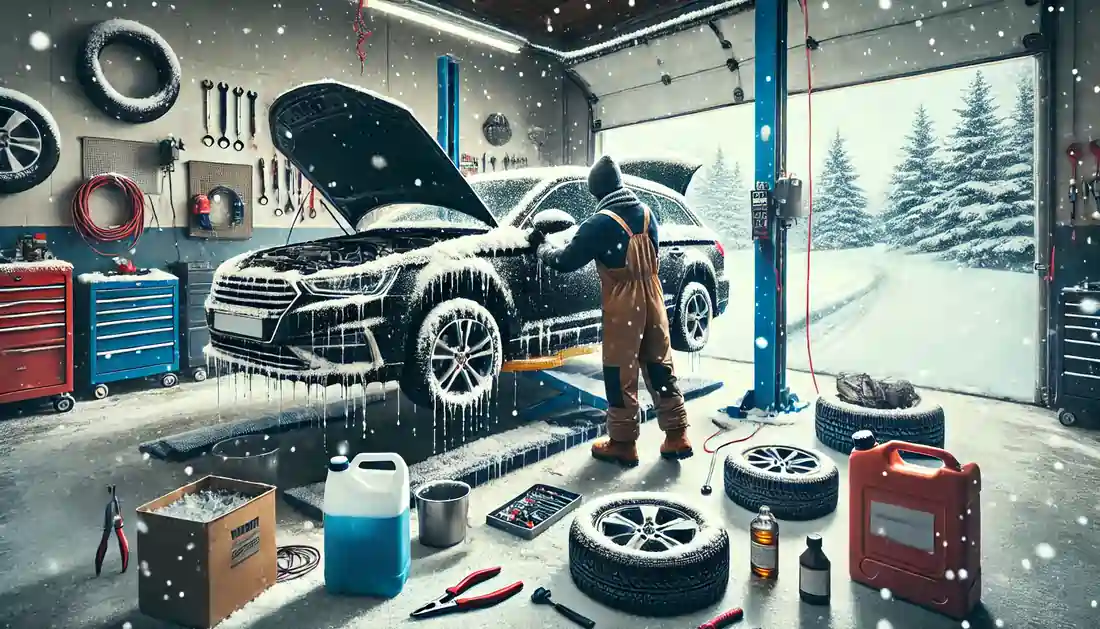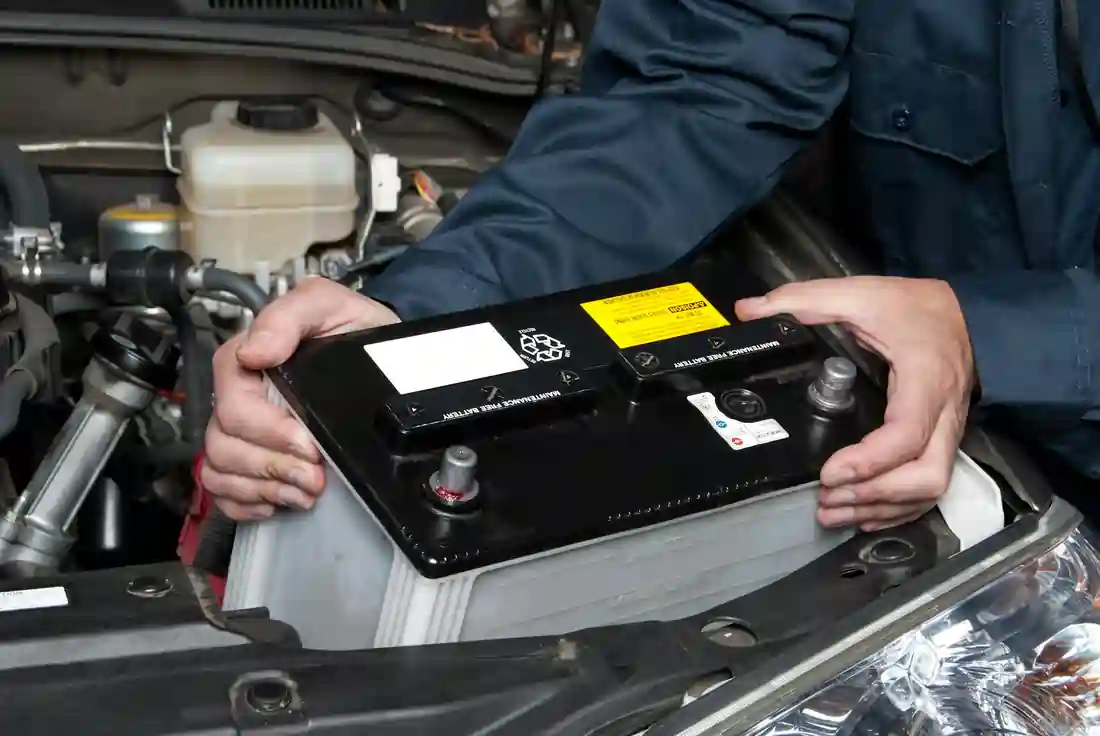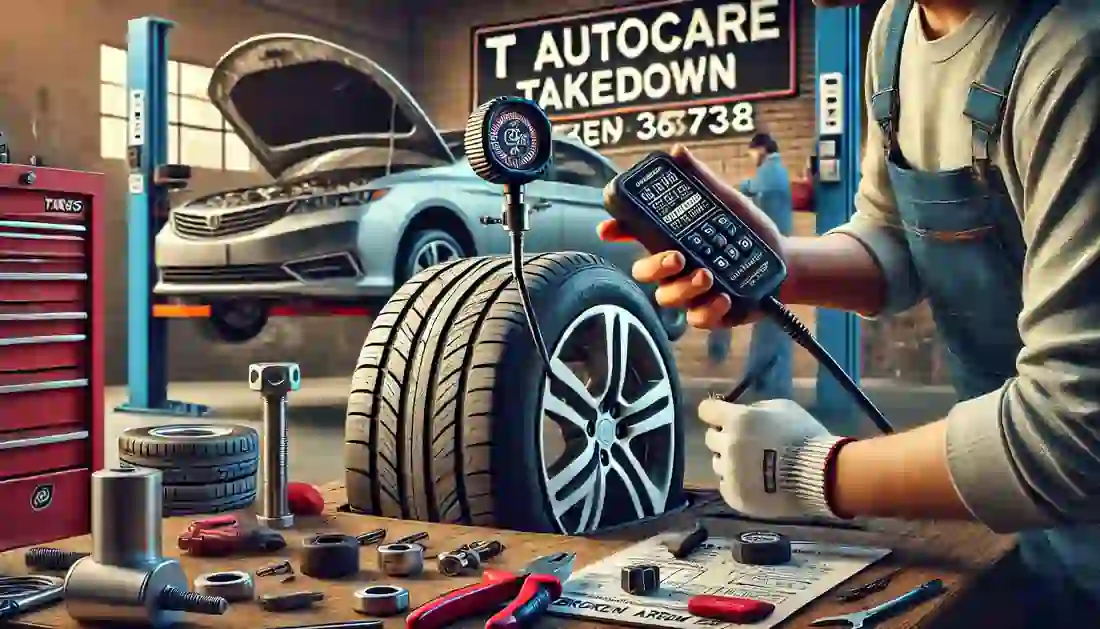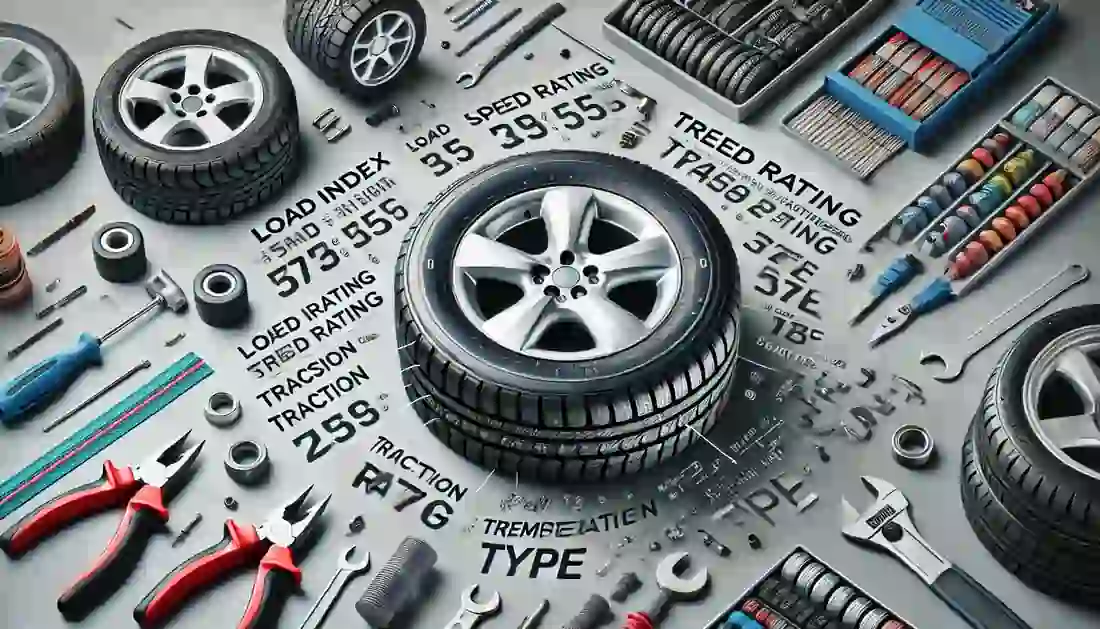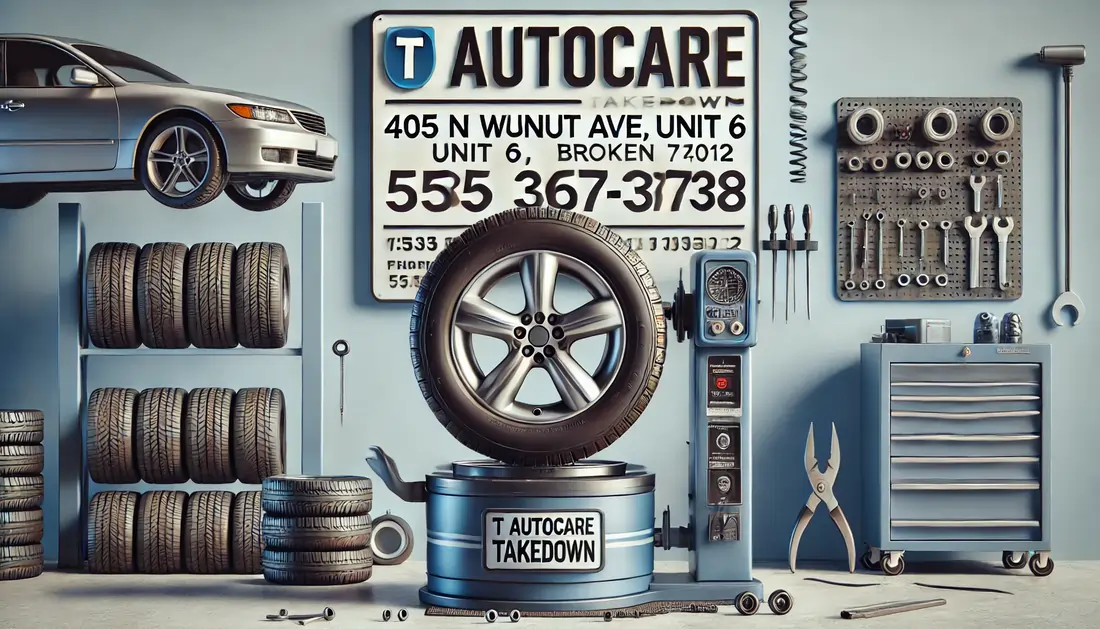Winter driving can be challenging and hazardous if you’re not properly prepared. Icy roads, reduced visibility, and poor tire traction can make driving dangerous. Here’s a comprehensive guide on how to handle your car in snow and ice, ensuring your safety and the safety of others on the road. For additional tips on preparing your vehicle for winter, check out our winterizing your vehicle guide to make sure your car is ready for the harsh conditions.

Driving in snow and ice requires careful preparation and the right techniques to maintain control of your vehicle. It’s also important to ensure your car is in top condition before winter hits. For those in need of auto repair in Broken Arrow, our team provides essential services like tire rotations to help you stay safe on icy roads
Prepare Your Vehicle
Tires
Winter Tires: Equip your car with winter tires for better traction. Winter tires are specifically designed to handle snow and ice, providing superior grip compared to all-season tires. If you’re unsure whether to choose winter tires or stick with all-season tires, check out our guide on how to choose between all-season and winter tires.
Tire Pressure: Cold weather causes tire pressure to drop, which can affect your car’s handling and tire wear. Check your tire pressure regularly and ensure it’s filled to the manufacturer’s recommended level. For more tips, read our guide on how to check your car’s tire pressure to keep your tires in optimal condition.
Tread Depth: Adequate tread depth is essential for maintaining traction on slippery roads. Ensure your tires have at least 2/32 of an inch of tread depth for safe winter driving. If you’re unsure how to check, see our article on the importance of tire tread depth for step-by-step guidance.
Battery
Battery
Cold temperatures reduce battery power, which can make starting your car more difficult in winter. Have your battery and charging system checked by a mechanic to ensure they are in good condition before the cold hits. A weak battery is more likely to fail in freezing temperatures. For tips on keeping your battery in top shape, check out our guide on how to keep your battery in top condition.
Fluids
Use winter-grade windshield wiper fluid and ensure your reservoir is full. This helps prevent the fluid from freezing and maintains visibility in harsh conditions. Consider installing heavy-duty winter wipers to handle ice and snow buildup on your windshield. For more DIY tips, read our guide on how to change your windshield wipers.
Check your coolant levels to prevent your engine from freezing in cold weather. Make sure the coolant meets the manufacturer’s specifications for winter driving, ensuring proper protection for your engine. To learn more about your car’s cooling system, visit our article on how to maintain your car’s cooling system.
Lights and Safety
Inspect your headlights, brake lights, and turn signals regularly to ensure they are functioning correctly and free of snow and ice. Clear visibility is essential for safe driving, especially in snowy or icy conditions. If any bulbs are out or dim, replace them promptly. For more guidance on maintaining your vehicle’s lighting, check out our post on light repair services to help you stay safe on the road.
Emergency Kit
Keep an emergency kit in your car to prepare for unexpected situations. Essential items include a snow shovel, ice scraper, abrasive material (like sand or kitty litter) for traction, jumper cables, blankets for warmth, and a first aid kit. These items can be lifesavers if you get stuck or stranded in bad weather. For a complete list of must-have items, check out our guide on essential items for your car’s emergency kit.
Driving Techniques
Starting and Stopping
Slow Acceleration and Deceleration: Apply the gas slowly to gain traction and avoid skids. Sudden movements can cause your tires to lose grip on icy roads. Similarly, slow down gradually when stopping, giving yourself extra time to react and avoid sliding. For more tips on staying safe while driving in winter conditions, check out our guide on safe driving in snowy and icy conditions.
Avoid Using Cruise Control: It’s important to maintain full control of your vehicle when driving on slippery roads. Using cruise control can cause you to react more slowly to sudden changes in road conditions, increasing the risk of skids and accidents.
Handling Skids
Oversteer (rear-wheel skid): If your rear wheels skid, steer gently into the direction of the skid and gradually accelerate to regain control. This helps align your wheels with the direction you’re trying to go and brings your vehicle back under control. For advice on keeping your car well-maintained for winter conditions, check out our preventative maintenance guide.
Understeer (front-wheel skid): When your front wheels lose traction, ease off the accelerator and gently steer back towards a straight path until you regain traction. This allows your tires to reconnect with the road without spinning or sliding further.
Braking Techniques
If your vehicle has antilock brakes (ABS), apply steady, firm pressure to the brake pedal. The ABS system will prevent the wheels from locking up, allowing you to maintain steering control. If your car does not have ABS, you may need to pump the brakes gently to avoid wheel lockup. For more information on maintaining your brake system, check out our guide on brake repair and maintenance.
Driving on Ice and Snow
Black Ice: Black ice is one of the most dangerous hazards in winter driving because it’s almost invisible. Be extra cautious, especially in shaded areas, bridges, and overpasses where ice tends to form. If you encounter black ice, ease off the gas and keep your steering wheel straight until you pass over it. For more tips on driving in slick conditions, see our safe driving in rainy conditions guide, which includes advice for low-traction scenarios.
Hills: Avoid stopping when going uphill, as it can make it harder to regain traction and move forward. Instead, try to gain some momentum on flat ground before heading uphill, and maintain a steady pace to avoid getting stuck.
Getting Unstuck
Rocking Method
If your car gets stuck in snow, try the rocking method to free it. Shift between drive and reverse, gently pressing the gas to move the car back and forth. This technique helps you gain momentum and traction to escape deeper snow. If your tires spin without moving, stop and clear snow around the tires before trying again.
Avoid Overexertion
When digging your car out of snow, take breaks to avoid overexertion, as it can be physically demanding. Focus on clearing snow from around the tires and underneath the car to help with traction. Make sure to clear snow from the exhaust pipe as well to prevent carbon monoxide buildup, which can be dangerous if the engine is running.
Stay Safe and Ready This Winter
Driving in snow and ice requires proper preparation and extra caution. By following these tips, you can enhance your safety, improve traction, and ensure a smoother journey during the winter months. Remember, regular maintenance plays a key role in keeping your vehicle ready for the harsh conditions of winter. For any winter car maintenance needs or to address any repair concerns, visit T Autocare Takedown, your trusted auto repair in Broken Arrow at 1501 W Detroit St, Broken Arrow, OK 74012, or call us at (539) 367-3738.
Our auto repair shop is fully equipped to handle all your vehicle repair needs, from tire checks to engine maintenance, ensuring your car is ready for any winter challenge. Whether you need an auto service, car repair, or routine auto maintenance, our experienced mechanics are here to help. Keep your car in top condition with regular visits to our auto shop for comprehensive car maintenance and vehicle repair services. We’re committed to keeping your vehicle safe and reliable throughout the year.
References
For additional information and guidance on keeping your car in top shape during winter, explore these helpful resources:
- NHTSA – Winter Weather Driving Tips (NHTSA)
- How to Prepare Your Car for a Winter Storm (Constellation Connect)
- Winter Driving Safety Tips (Bridgestone)


